This mold-blown glass whale oil lamp with beehive design stands 6 inches high. It was made in North America, c.1850. As oil lamps were used extensively throughout the house, it was not unusual for them to break. If the owner was crafty, they could add fabric and batting to the top portion of the broken base, transforming it into a pin cushion. The upper portion could be fitted with a metal or wood replacement base, which is what we have here.
Judging by the simplicity of the work, this 3.5 inches square rustic wood replacement base was most likely a DIY repair. Wooden make-do repairs done at home range from the simple (Flint glass candlestick, c.1870) to over-the-top flights of fancy (Oil lamp with pyramid base, c.1920). I am hoping that people will be inspired by my collection of inventive repairs and take a stab at repairing their own wounded possessions.
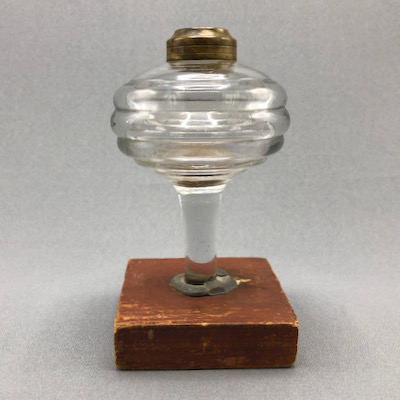
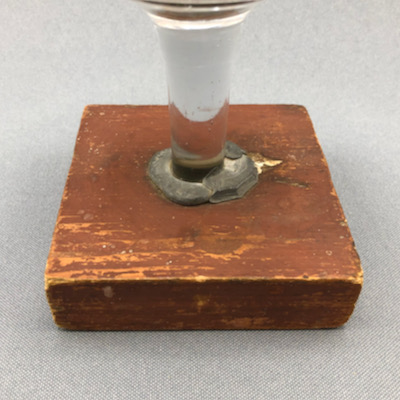

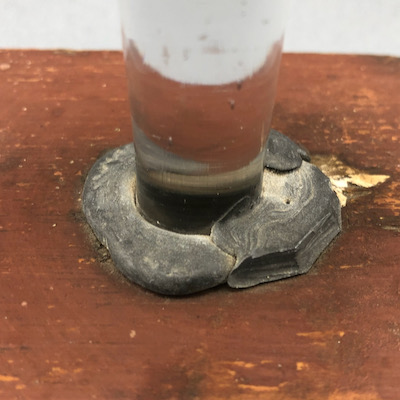
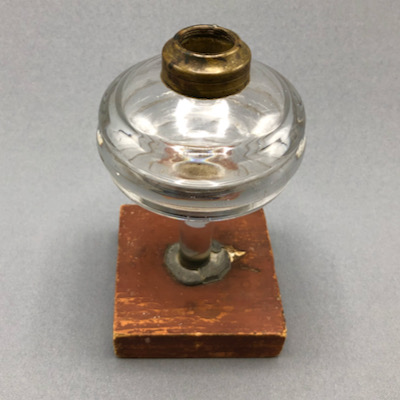
This intact example shows what the original base on my lamp would have looked like before it took a tumble.
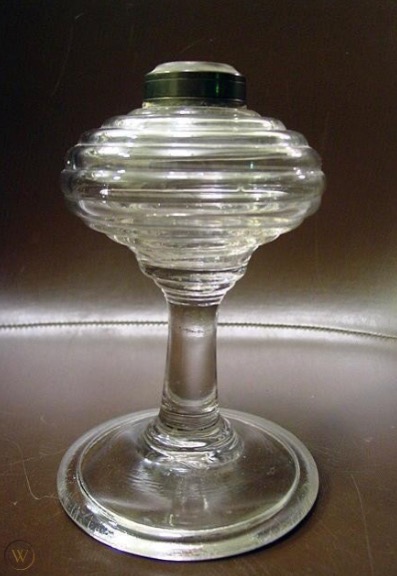
Photo courtesy of WorthPoint
We are so wasteful. We would have a fraction of trash in this world if we reused. I cringe when I see commercial carters tossing reusable building materials in the hopper. I am always humbled when I see your new posts. Reduce reuse and whatever else we are supposed to do.
Love it. Looks like plumber’s putty at the base but I bet it’s lead holding it in place. I’ve used plumber’s putty for so many broken items including the stem of a martini glass recently (my penance for breaking it—now cockeyed) but I agree with the statement above—these are models for sustainability.